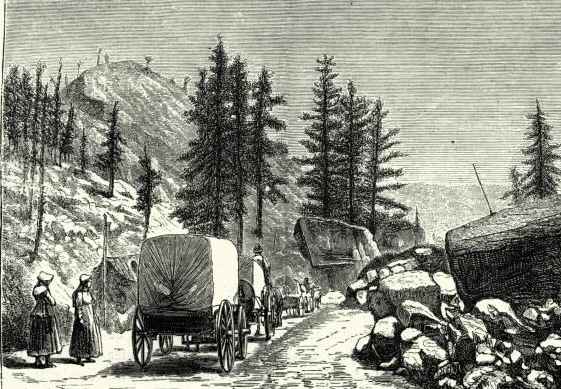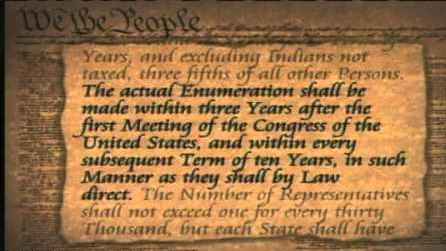






See listing of Recent and Most Popular articles on the Home Page
Our World
Category: Government & Politics / Topics: Demographics • Government • History • Statistics • Trends
Constitution Day and the 2020 Census
Posted: September 17, 2020
Marking the beginning, nearing the finish line for this decennial census…
Celebrating Constitution Day and the beginning of the Census
Dr. Steve Dillignham, Director of the U.S. Census Bureua, made these comments today—Constitution Day, September 17, 2020—as the coutning phase of the 2020 Census draws to a close at the end of the month (see more after his comments).
Today, I am on the road partnering with state and local leaders to urge communities to respond to the 2020 Census. We kicked our outreach efforts off in Philadelphia, PA, one year ago, at the National Constitution Center. We chose that location and this day, Constitution Day, to celebrate the fact that our critical mission stems from the Constitution of the United States signed September 17, 1787.
Article I, Section II of the Constitution calls for an “actual Enumeration” to be “made within three Years after the first Meeting of the Congress of the United States, and within every subsequent Term of ten Years, in such Manner as they shall by Law direct.” The first “Enumeration” took place in 1790, and has been conducted every 10 years since.
Two hundred and thirty years ago, by foot and on horseback, U.S. Marshals visited every single household across our young nation. During that first census, Congress expected to find about 2 million people living in the country. When the results came back in 1793, the population exceeded 3.9 million.
The Constitution had set the number of Representatives at 65 from 1787. The first apportionment, based on the 1790 census, resulted in an increase to 105 members. They had to build an addition onto Independence Hall to fit the new congress! The House of Representatives grew after each census until reaching its current number of 435 in 1911.
The data collected through the 2020 Census is just as impactful as the data collected in 1790. A complete and accurate population count determines how many members each state will have in the House of Representatives and how hundreds of billions of federal dollars are distributed every year — money that funding schools, roads, hospitals, and so much more and shaping the future of every community across the Nation.
If you haven’t responded already, please respond now, online at 2020Census.gov, by phone or by mail — or when a census taker visits. Your answers are protected and confidential, and it only takes a matter of minutes. If you have responded, you can join me in celebrating Constitution Day and promote the 2020 Census by making sure all of your family and friends are counted!
Two weeks to go!
SEPTEMBER 15 - Over 92% of housing units have been accounted for in the 2020 Census as of today, with 26.6% counted by census takers and other field data collection operations, and 65.9% of housing units responding online, by phone or by mail.
Every day, the U.S. Census Bureau releases the 2020 Census housing unit completion rate for the nation, all 50 states, the District of Columbia and Puerto Rico. In addition, the Census Bureau releases the completion rates for the Nonresponse Followup operation by area census office.
The Census Bureau is committed to a complete and accurate count, and urges every household to respond when a census visits or to respond on their own by using their census ID online, by phone or by mail.
Visit 2020census.gov to respond now and for more details.
SEPTEMBER 16 - The U.S. Census Bureau will begin the special operations to count people experiencing homelessness in communities across the country on Sept. 22. Specially trained census takers will count people Sept. 22-24 at shelters, soup kitchens and mobile food van stops in an operation called Service-Based Enumeration (SBE). Census takers will count people who live outdoors, in transit stations, and at other locations where people are known to sleep in an operation called Targeted Non-Sheltered Outdoor Locations (TNSOL).
“The Census Bureau is committed to counting everyone once, only once, and in the right place,” said Dr. Steven Dillingham, director of the Census Bureau. “To reach everyone living in the United States, our census takers are conducting special operations to count people experiencing homelessness to ensure we have a complete and accurate 2020 count.”
Counting people experiencing homelessness is part of the Group Quarters (GQ) operation, a special process to count people in unique living situations. The GQ operation also counts people living in nursing homes, prisons, missions and dormitories. A complete and accurate 2020 Census can ultimately help organizations provide better services, food distribution capability, and improved shelter options to those in need.
“We are committed to taking every step necessary to make sure we count everyone,” said Dillingham. “Even if you have someone staying with you who doesn’t have another place to live, be sure to include them when you respond.”
In preparation for counting people experiencing homelessness, the Census Bureau is coordinating with local service providers and has consulted with advocacy groups and other stakeholders throughout the country to adjust this work in response to COVID-19. The Census Bureau is also working with service provider administrators to identify locations where people experiencing homelessness are living to ensure a complete count of this population.
Hotels that are being used as COVID-19 shelters generally fall under the Enumeration at Transitory Locations operation and are not a part of SBE. However, if 100% of the hotel is housing people experiencing homelessness, then it is enumerated during SBE.
To count people outdoors in places like tent encampments, teams of census takers wearing reflective vests and carrying smartphones, flashlights and paper questionnaires will visit those locations; often at night. Every effort will be made to collect all the information requested on the census form. If that isn’t possible, census takers will conduct a population count. Census takers will follow the latest local public health guidance regarding the use of personal protective equipment and social distancing.
Census statistics are crucial to programs and service providers that support people experiencing homelessness and inform how state, local and federal lawmakers will allocate billions of dollars in federal funds for local services such as shelters and soup kitchens, and programs like the Emergency Shelter Grants Program and the Special Milk Program for children. Local nonprofit organizations also rely on census statistics to improve where and how they provide critical services.
Editors' Note: As of Septermber 17, the total enumeration rate for U.S.Households was 93.8%. The list includes the 50 states plus the District of Columbia (92.1%) and Puerto Rico (95.8%).
The top five states as of September 17, 2020:
- Idaho (99.7)
- West Virginia (99.6)
- Hawaii (98.9)
- Maine (98.0)
- Washington (98.0)
The bottom five states as of September 17, 2020:
- Georgia (87.4)
- Mississippi (87.1)
- Lousiana (86.9)
- Montana (86.9)
- Alabama (85.6)
Search all articles by U.S. Census Bureau staff
Posted: September 17, 2020 Accessed 692 times
![]() Go to the list of most recent Our World Articles
Go to the list of most recent Our World Articles
![]() Search Our World (You can expand the search to the entire site)
Search Our World (You can expand the search to the entire site)
![]() Go to the list of Most Recent and Most Popular Articles across the site (Home Page)
Go to the list of Most Recent and Most Popular Articles across the site (Home Page)
 Loading requested view...
Loading requested view...
